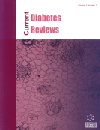-
s Real-world Safety and Effectiveness of Insulin Glargine 300 U/mL in Participants with Type 2 Diabetes Mellitus During the Period of Ramadan in Four Countries (Egypt, Jordan, Lebanon, and Turkey): A Prospective Observational Study
- Source: Current Diabetes Reviews, Volume 20, Issue 5, Jun 2024, p. 137 - 147
-
- 01 Jun 2024
- Previous Article
- Table of Contents
- Next Article
Abstract
Aim: This non-interventional observational study aimed to describe the clinical outcomes of patients with T2DM treated with Gla-300 during the period of Ramadan. Background: Type 2 diabetes mellitus (T2DM) patients who decide to fast during the holy month of Ramadan face several challenges in achieving glycemic control without increasing the risk of hypoglycemia. Insulin glargine-300 (Gla-300) has well-established safety and efficacy in improving glycemic control in multiple randomized clinical trials (RCTs). However, limited evidence is available regarding its safety and effectiveness during fasting. Objective: The objective of this study was to assess the safety and clinical outcomes of insulin glargine-300 (Gla-300) in T2DM patients before, during, and after Ramadan. Methods: We conducted a prospective, observational, non-comparative, multicenter study on patients with T2DM currently treated with Gla-300 who planned to fast and continue on Gla-300 during Ramadan in four countries (Egypt, Jordan, Lebanon, and Turkey). The study outcomes included the change in glycemic parameters and incidence of hypoglycemia before, during, and after Ramadan. Results: One hundred and forty T2DM patients were included. Nearly 61% of the included patients had a duration of diabetes of <10 years. The mean Gla-300 daily doses during the pre-Ramadan, Ramadan, and post-Ramadan periods were 22.2 ±7.4, 20.4 ±7.5, and 22.5 ±4.7 IU, respectively. The mean change values from pre-Ramadan to Ramadan and post-Ramadan were -1.7 ±6.9 IU and 0.5 ±4.7 IU, respectively, among the included patients. The mean HbA1c decreased during the study period initiating from 7.9% ±1.4% pre-Ramadan to 6.9% ±0.4% post-Ramadan. The overall HBA1c target value was 6.9% ±0.4%, while the HbA1c target was achieved by 29 patients (21.9%). The mean fasting blood glucose (FPG) showed a reduction from baseline value in the post-Ramadan period by -0.9 ±2.3 mmol/L. Five patients (3.57%) had symptomatic documented hypoglycemia during Ramadan, and none was considered to have severe hypoglycemia. Conclusion: Our study showed that insulin Gla-300 maintained the glycemic control of T2DM patients who decided to fast during the holy month of Ramadan without increasing the risk of hypoglycemia. Regular self-monitoring of blood glucose levels during Ramadan is highly recommended to avoid possible complications.


